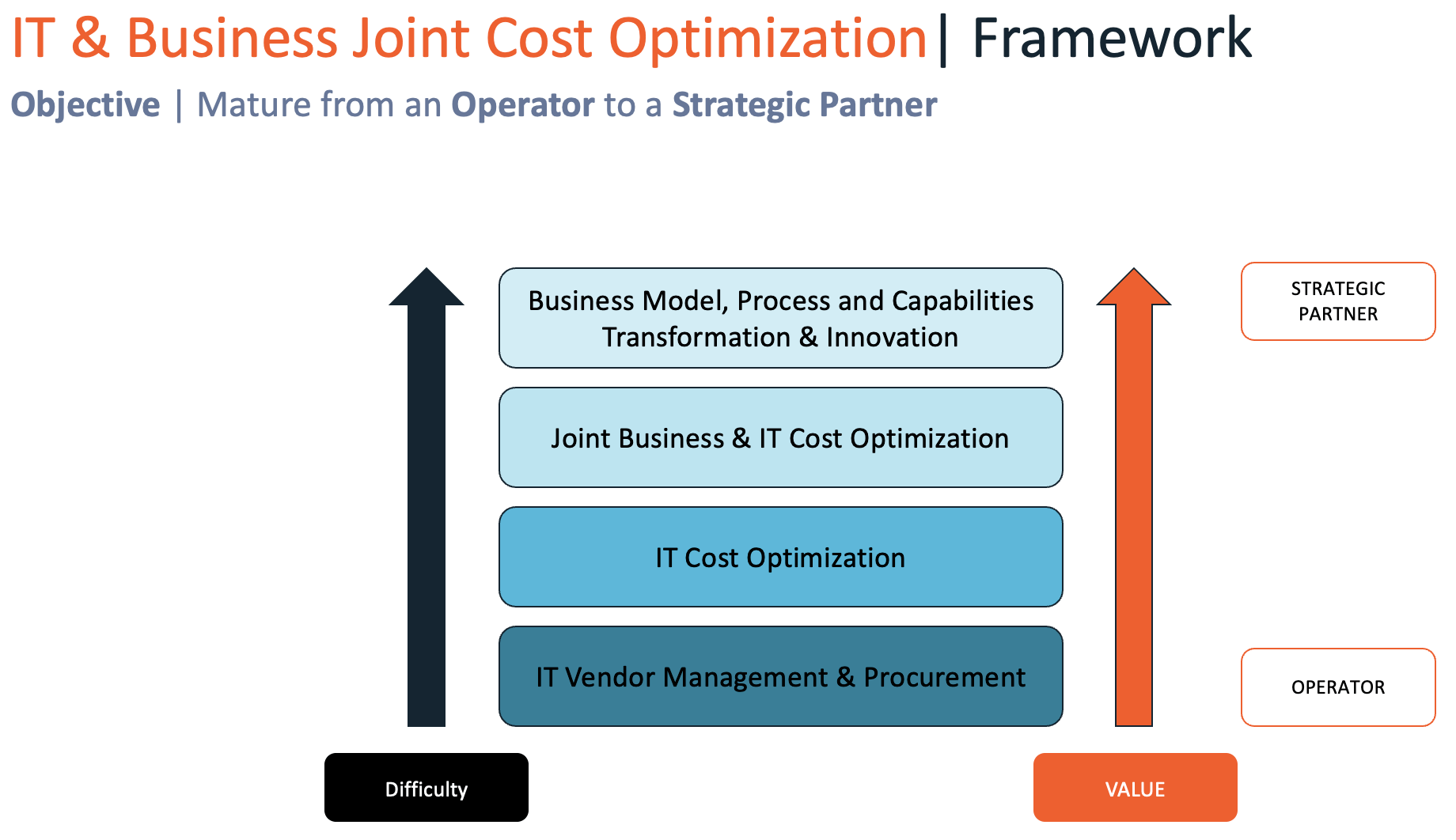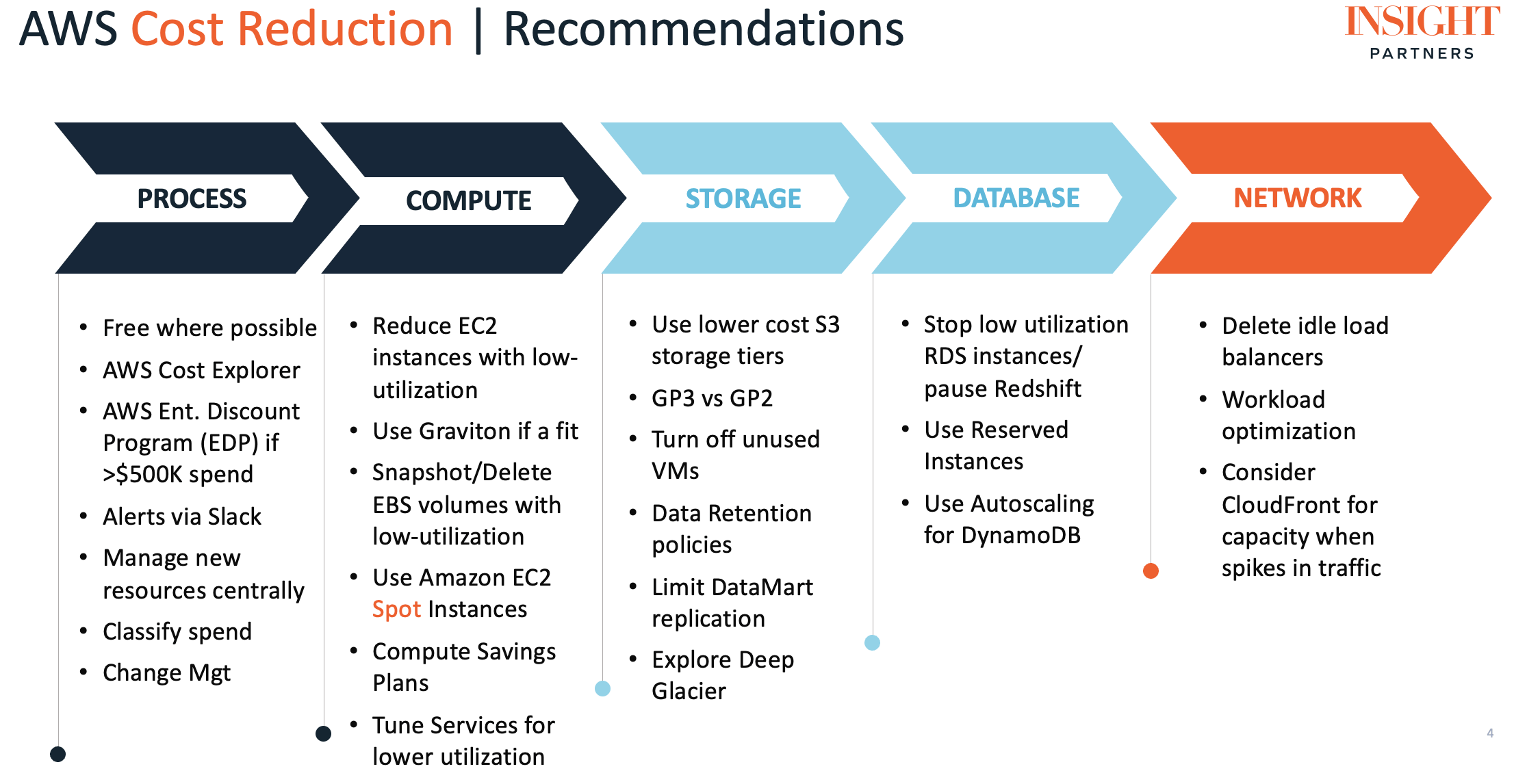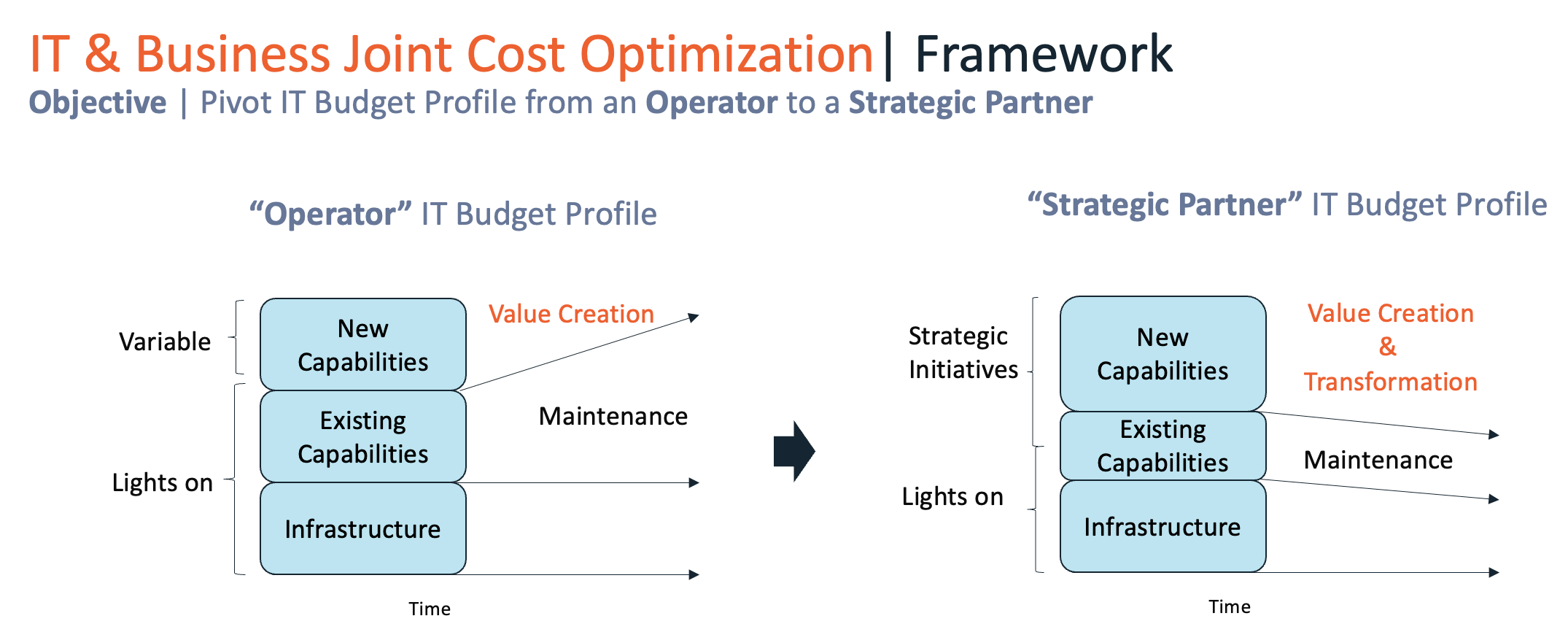Strategic Technology Cost Optimization for Long-Term Growth

Optimizing technology costs has always been an ongoing priority for CxOs. In 2022, it shifted from virtue to necessity for preserving at least two years of runway.
Consequently, technology and finance leaders will find ways to strategically allocate costs to weather the stormy seas ahead. Beyond lightening the load, CxOs will also look for new ways to deliver business value, divest operationally and re-invest strategically for longer-term growth.
We recommend companies model a worst-, middle-, and base-case planning scenario for effective decision making — regardless of the broader economic environment. A proper platform or planning tool can certainly help with monthly forecasting. Among the options available, Jedox, one of our portfolio companies, offers a platform for FP&A planning and “what if” scenario modeling.
Stagflation and the Rule of 60
Cost optimization is often spurred by changes in the economy. When a market undergoes stagflation, the combined effect of no growth (stagnation) and rising costs (inflation) means companies must act quickly to preserve cash flow.
ScaleUps can be notoriously investment-hungry, burning through millions of dollars per quarter to chase hockey-stick growth curves. Tech companies often attempt to follow the “Rule of 40”: the principle that a tech company’s combined growth rate and profit margin should add up to greater than 40%. In lean economic times, however, companies may want to consider moderating expectations and pursue more sustainable growth patterns.
In a stagflation economy, we recommend companies apply a Rule of 60. Hitting this target can be challenging, as slowing growth is almost anathema to tech ScaleUps. Companies can position themselves to withstand economic turbulence by understanding the importance of preserving runway.
Beyond cutting costs, today’s technology leaders pivot from acting as an "operator" to evolving into a "strategic partner" — to ensure every bit of value is extracted from the budget available.

Achieving a Rule of 60 and maximizing value is like driving in the fog – it’s difficult to recognize how your actions translate into results. Tech companies sometimes panic and resort to drastic measures – too often involving mass layoffs. Moves like these often do more harm than good, and can be avoided with deliberate planning and “what if” analysis.
Gartner has a useful framework for strategic cost optimization. It helps companies evaluate the trade-offs between benefits, costs, risks and viability of different cost-optimization initiatives.
We recommend four key steps that can help tech leaders improve their cost optimization without resorting to overcorrections:
1) Asset management
One opportunity is closing loopholes in IT financial management (ITFM) procedures. This includes misaligned depreciation and amortization (D&A) schedules, or miscategorization of IT spending as an asset. Closing these loopholes can identify more expenses to reduce operations costs so the funds can be reinvested strategically.
- Does the organization have assets or equipment that needs decommissioning?
- Are there applications or services that have been decommissioned, yet are still being amortized?
- If the department has budget overspend or underspend, what is driving the delta?
These factors can contribute to underutilized resources. Their removal represents an efficient way to improve cash flow.
2) Infrastructure alignment to reduced demand
ScaleUps in rapid growth phases often spin up parallel engineering and IT resources to find a product market fit — even if some of those resources end up being abandoned after trial phases. They often spend $1.60 to get $1 in revenue. CxOs looking to trim excess spending look at resource allocation and ask:
- Does the organization have infrastructure that was over provisioned for customer demand that never materialized?
- Are the biggest existing customers being served well as they struggle and consolidate their spend?
- Does the forecast peak and non-peak demand require the same level of availability, scalability and performance?
- Does the organization use high-end storage when mid-grade or low-end would suffice?
- Is data being replicated for use in geographical areas where demand has dwindled?
- Are there hardware and software assets licensed to “ghost” employees who have changed roles or left the company?
These questions also lead to improvements in other areas of the organization. For instance, maintaining legacy applications sometimes requires heavy levels of support costs. Replacing or removing them may not only reduce support costs up front, but lead to reduced technical debt on the engineering side, and ultimately a better product.
Below is a useful framework we recommend for managing AWS cost.

3) Portfolio and infrastructure rationalization
With so much fragmentation in the SaaS space, automation, workflow and productivity tools have overlapping business capabilities. Additionally, multiple contracts with the same vendor and legacy licensing for third-party software may exist.
Companies may have duplicate business capabilities, systems and non-production infrastructure.
In 2020, companies spent over $17 billion on unused or under-optimized resources. One contributing factor is the nature of the work week. While production resources require high availability, non-production (development, staging and QA) resources are only used during the 40-60 hours a week when engineering teams are working.
For business capabilities rationalization, portfolio company LeanIX offers a SaaS management platform (SMP) tool. SMP allows technology leaders to see a holistic view of their SaaS portfolio, drill down on specific categories of service subscriptions, manage renewals and deprovision redundant or underutilized resources. LeanIX publishes guides for sustainable cost optimization. They also help you discover areas where you can increase the adoption of your existing technology stack. For improving the procurement process, portfolio company Tropic can help you pivot from negotiating discounts to getting the right software and the operational intelligence needed to make strategic decisions across the entire organization.
4) Need-based alternatives
Technology leaders could tier requests for infrastructure and systems based on need and business value. They can automate through digital touches and greater cross-functional alignment.
For example, Tier 1 Production systems infrastructure would require higher levels of performance, availability and faster recovery times. Tier 2 and 3 systems could use more cost-effective infrastructure and support plans.
Most engineering and design staff require high-powered laptops. Giving engineering-capable hardware or software licenses to non-product staff (sales, marketing or operations) may be an unnecessary expense. Instituting standardized processes for common purchases can prevent individual managers or employees from over-equipping themselves.
Moderating need-based demand through planning involves a “one-step ahead” mentality.
Janet Babiarz, CFO of Insight Partners portfolio company GT-SUITE software provider Gamma Technologies (GT), said: “GT collaborates with forward-thinking customers and staying ‘one step ahead’ allows us to plan our spending proactively rather than reactively,” Babiarz said. “Being proactive leads to happy customers and empowers employees who love being on the cutting edge of new technologies.”
CxO as a Strategic Partner
Tech leaders today extract every bit of business value, while keeping costs under control.
CxOs often pivot from an “operator” to a “strategic partner.” This requires a forward-looking mindset change from maintaining existing infrastructure to seeking out new capabilities with existing resources as shown in the graph below.

Examples of new capabilities could include:
- In-app product capabilities to drive customer retention up or drive cost of onboarding new users down
- Peer-to-peer communities, chatbots, knowledge centers to reduce the cost of customer support
- Self-service or guided demos to reduce the cost of sales
To this end Rick Schuler, CIO of Within3, describes how his company is able to drive business value. This is achieved by adopting a deliberate approach to systems and technology supporting the business. He recommends asking three questions:
- Is the technology appropriate and the right fit for your business?
- Is your staff fully trained?
- Are you getting the expected return from the investments you've made?
“If the answer to any one of these three questions is ‘no,’ change the technology, people or processes to get them all to ‘yes,’” Schuler says.
The Right Choices at the Right Time
Finding the right approach to cost optimization and value maximization are among the most difficult challenges tech leaders face. They may be further compounded in the upcoming months.
Optimizing technology cost is not a pure efficiency play. It fundamentally changes the investment mix, business priorities, roadmaps and capabilities when done strategically.
We recommend companies model a worst case, middle case and base case scenario leveraging Jedox or Anaplan. Strategy is about making deliberate, integrated and aligned business and technology choices.
Regardless of the broader economic conditions, we at Insight Partners are here to support your organization and partner with you in making the best investment choices. With every change comes an opportunity: CxOs who seize the opportunities to divest operationally and reinvest strategically in today’s climate will succeed in the near term and set up their companies for growth and scale for years to come.








